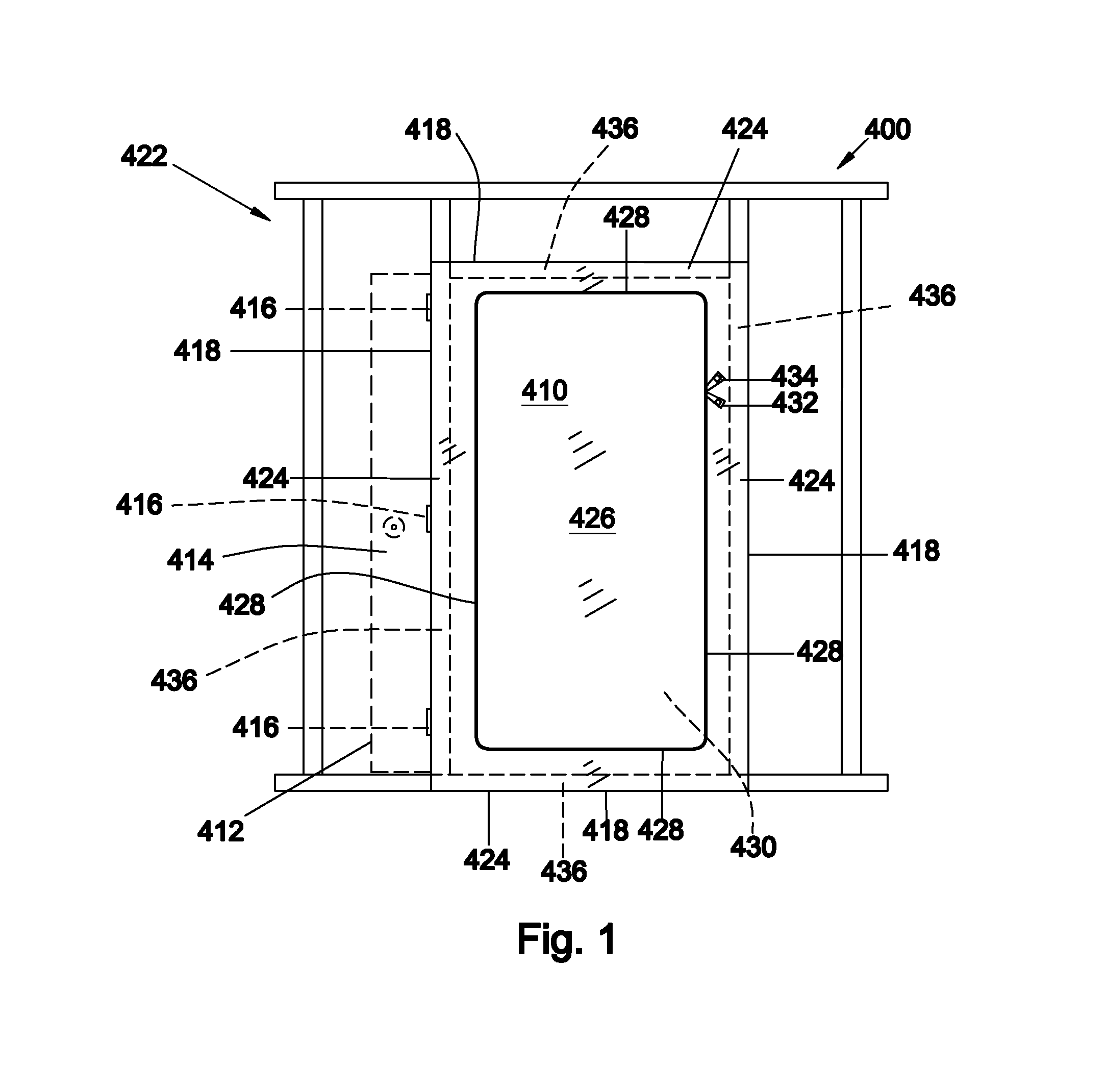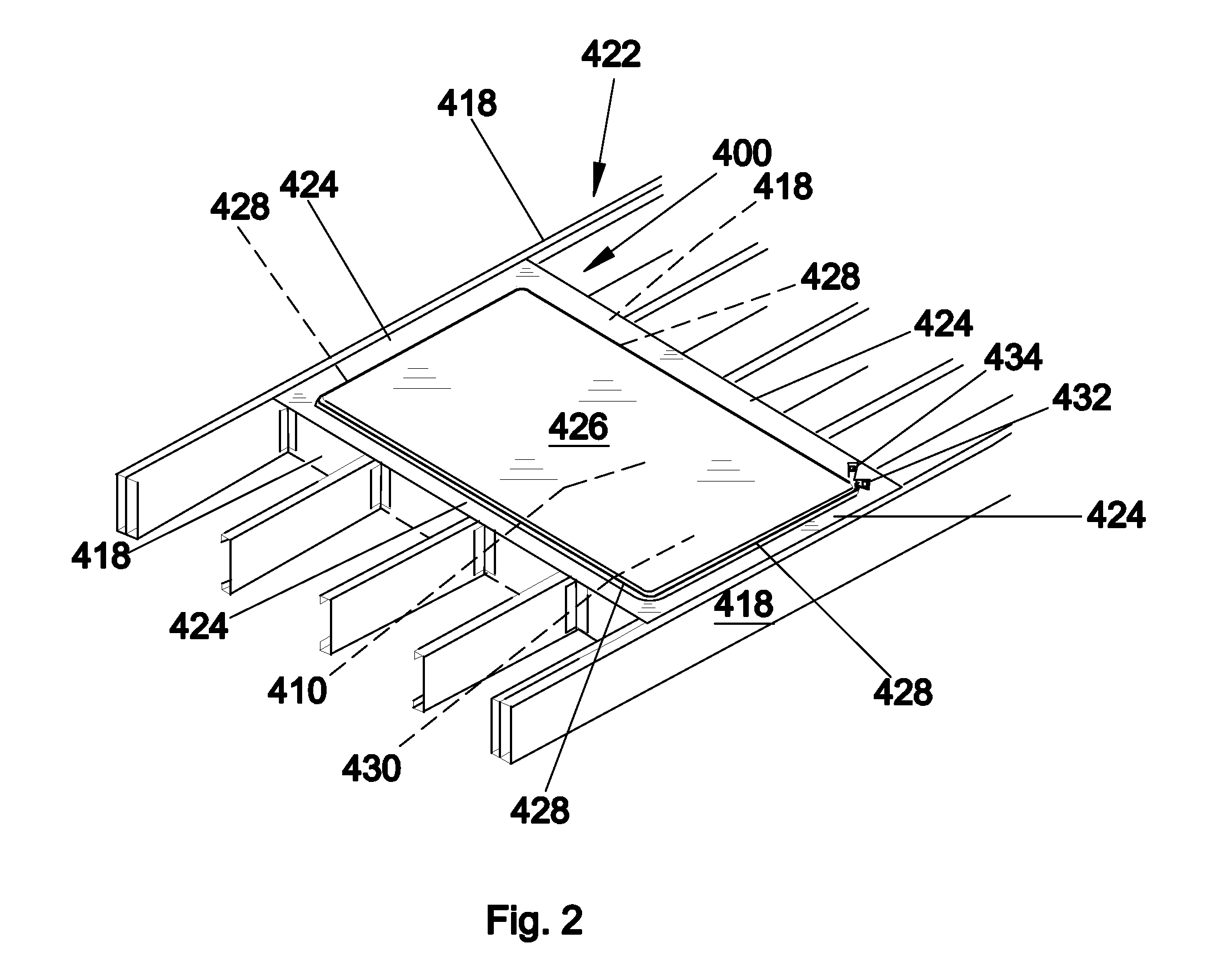Attic Door Insulator
a technology for attic doors and insulators, which is applied in the field of attic access door insulators, can solve the problems of difficult and impractical installation of conventional insulation, easy damage of integrated door seals, and difficult insulate attic doors, so as to enhance the insulation properties of attic doors and reduce heat transfer. , the effect of facilitating us
- Summary
- Abstract
- Description
- Claims
- Application Information
AI Technical Summary
Benefits of technology
Problems solved by technology
Method used
Image
Examples
Embodiment Construction
[0017]The present invention will now be described more fully hereinafter with reference to the accompanying drawings in which preferred embodiments of the invention are shown. This invention may, however, be embodied in many different forms and should not be considered as limited to the embodiments set forth herein. These exemplary embodiments are provided so that this disclosure will be both thorough and complete, and will fully convey the scope of the invention to those skilled in the art.
[0018]Referring to FIGS. 1-6 the invented embodiment of an attic access cover 400 for insulating an attic access opening 410 for a knee wall door 412 (FIG. 1) is illustrated. Referring to FIG. 1, the knee wall-door 412 includes a door 414, hinges 416 for allowing the door 412 to swing between an open and closed position, and framework 418 that defines the opening 410 within a wall 422 (or ceiling) of a house.
[0019]In the preferred embodiment the attic access cover 400 includes a perimeter flange ...
PUM
 Login to View More
Login to View More Abstract
Description
Claims
Application Information
 Login to View More
Login to View More - R&D
- Intellectual Property
- Life Sciences
- Materials
- Tech Scout
- Unparalleled Data Quality
- Higher Quality Content
- 60% Fewer Hallucinations
Browse by: Latest US Patents, China's latest patents, Technical Efficacy Thesaurus, Application Domain, Technology Topic, Popular Technical Reports.
© 2025 PatSnap. All rights reserved.Legal|Privacy policy|Modern Slavery Act Transparency Statement|Sitemap|About US| Contact US: help@patsnap.com



